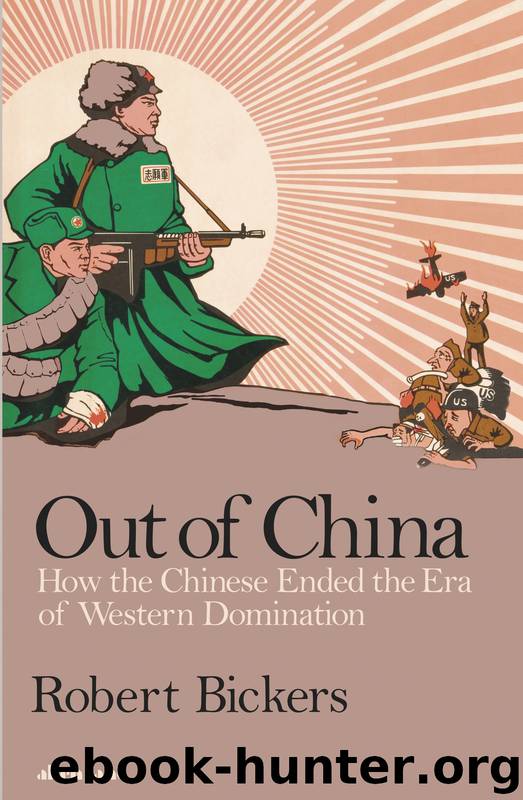Out of China by Robert Bickers

Author:Robert Bickers
Language: eng
Format: epub
ISBN: 9781846146190
Publisher: Penguin Books Ltd
Published: 2017-02-13T05:00:00+00:00
8
Foreign Experts
The former concession areas in Guangzhou on Shamian Island had been restored to their pre-war calm and beauty by the end of 1947. Some tensions existed where foreign property owners had been unable to remove politically well-connected Chinese tenants who had moved in when the Japanese had surrendered, but most had regained possession. Inflation and import restrictions notwithstanding, the outlook looked positive enough for National City Bank of New York to reopen its Guangzhou branch on the island to join some eighty foreign firms operating in the city. There was talk of turning the area into a cultural centre, as the infrastructure developed under the former ‘Shameen Municipal Council’ was so robust. Less prosaically, its magnificent camphor trees inspired one of the staff at the British Consulate to poetry that found an outlet in the pages of the South China Morning Post.1 It was, one visitor remarked, ‘a quiet place, where it is always Sunday morning’. So it was a shock, then, when on Friday, 16 January 1948 a large crowd surged across the bridges to the island, pushed aside police barricades and surrounded the British Consulate. An attempt was made to pull down the Union Jack that flew in its grounds, and then bricks and garden ornaments were thrown at the windows. Before troops restored order two hours later, the consulate had been invaded and set alight, the consul and vice consul hiding from the violent mob under their cook’s bed before escaping. The offices of Chartered Bank and Butterfield Swire were also set on fire, and the flames could clearly be seen three hours later as reporters rushed in on flights from Hong Kong. The consulate flag had been pulled down on Shamian, but the marchers were actually demanding that it be pulled down in Hong Kong: ‘Down with British imperialism,’ they shouted. ‘Return Kowloon and Hong Kong.’
A wave of student-led protest had erupted nationally after the colonial authorities in the British colony had started evicting some of the 2,000 people who had set up shacks on the site of the former walled city in Kowloon. For months there had been controversy about these squatters, as the British saw them, but more importantly there had been dispute for decades about who exercised sovereignty over the six-and-a-half-acre district, which before the extension of the Leased Territories in 1898 had contained the local Chinese government offices.2 The Chinese authorities had always maintained that their jurisdiction had been retained within it; the British rejected this claim, and had fitfully asserted their own over the years, but had been careful as they did so. Rather than turn the land over to urban development, as Kowloon grew rapidly during the interwar period, they had aimed at using the site to create a park, and in the 1930s had evicted the several hundred people who had made homes there. After the war, as refugees again moved back across the border, the Walled City – shorn of its walls, the stones from which were used to build the airport runway – attracted new residents.
Download
This site does not store any files on its server. We only index and link to content provided by other sites. Please contact the content providers to delete copyright contents if any and email us, we'll remove relevant links or contents immediately.
| Africa | Americas |
| Arctic & Antarctica | Asia |
| Australia & Oceania | Europe |
| Middle East | Russia |
| United States | World |
| Ancient Civilizations | Military |
| Historical Study & Educational Resources |
The Sympathizer by Viet Thanh Nguyen(4282)
The Rape of Nanking by Iris Chang(4119)
World without end by Ken Follett(3409)
Ants Among Elephants by Sujatha Gidla(3388)
Blood and Sand by Alex Von Tunzelmann(3113)
Japanese Design by Patricia J. Graham(3089)
City of Djinns: a year in Delhi by William Dalrymple(2493)
The Queen of Nothing by Holly Black(2458)
Foreign Devils on the Silk Road: The Search for the Lost Treasures of Central Asia by Peter Hopkirk(2418)
India's Ancient Past by R.S. Sharma(2391)
Inglorious Empire by Shashi Tharoor(2383)
Tokyo by Rob Goss(2365)
In Order to Live: A North Korean Girl's Journey to Freedom by Yeonmi Park(2325)
Tokyo Geek's Guide: Manga, Anime, Gaming, Cosplay, Toys, Idols & More - The Ultimate Guide to Japan's Otaku Culture by Simone Gianni(2301)
India's biggest cover-up by Dhar Anuj(2297)
The Great Game: On Secret Service in High Asia by Peter Hopkirk(2284)
Goodbye Madame Butterfly(2187)
Batik by Rudolf Smend(2091)
Living Silence in Burma by Christina Fink(2023)
